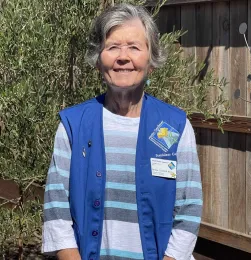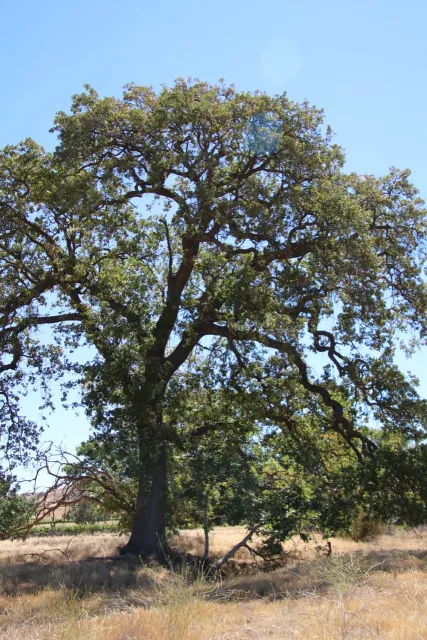
You may recognize her name from the numerous articles she has authored for The Stanislaus Sprout. Denise answers a few questions so you can get to know her better.
Denise, what inspired you to become a UC Master Gardener?
One of my friends who lives in Greeley Hill became a Master Gardener through Mariposa County’s training program during the first half of 2018. She regularly informed me of the topics being covered in her weekly classes which included water management, soils, drought-tolerant plants, pest management, and diagnosing garden issues. My career was in the biological sciences, which included botany, plant physiology, and microbiology, so it sounded fascinating to me. Some of my ongoing goals include lifelong learning, sustainable home gardening, and community volunteering.
How did you find out about becoming a UC Master Gardener?
I applied and was accepted for the 2020 class. In March, we had to switch from in-person to online, and my cohort became known as the “the Covid class” since we had to switch to Zoom during the pandemic shutdown.
Do you have a specialty or area of gardening that you’re particularly passionate about?

On a personal level I’m passionate about growing native plants that are water-wise and pollinator-friendly. I want my garden to have something blooming most months of the year that attract birds and valuable pollinators such as bees and butterflies.
Here in California’s Central Valley, we are facing longer, hotter summers and droughts. Many beneficial insects, birds, and native plant species are declining. I’m also passionate about how as a UC Master Gardener I have the privilege assisting home gardeners learn how to create sustainable gardens to help navigate these environmental challenges.
Now that you are a UC Master Gardener, what would you have done differently when you first started your current garden?
We moved into a brand-new house in 2019, a year prior to my going through the Master Gardener training program. The home builders had put in water-wise front yards without lawn which included flowering bushes, ground cover, rocks, and mulch. But the backyard was just bare ground, so we started from scratch. We wanted a sustainable, pollinator-friendly, drought-tolerant garden without lawn, and an efficient irrigation system, which we’ve essentially achieved. But with the knowledge I have gained as a Master Gardener, I would have first solarized the soil prior to planting, arranged our plants in hydrozones (grouping plants according to water and lighting needs), and whenever possible plant in groups of three (which creates more natural settings and is more insect-friendly).
What is your favorite plant (I know it’s hard to pick one), and why?
The magnificent valley oak tree (Quercus lobata) is absolutely my favorite plant. One of California’s iconic species is a long-lived, drought-tolerant tree with distinctive lobed leaves and narrow acorns. They play a vital role wherever they’re found along California’s riverbeds, foothills, and valleys, providing food, water, and shelter for hundreds of species including mammals, birds, amphibians, reptiles, insects, and arachnids. When strolling under their shade I love to visualize the spirits of the Indigenous California women of the past grinding acorns with mortars and pestles into a coarse meal or fine flour which they used to prepare a diversity of staple foods. This tree requires a lot of space, which we don’t have, so sadly we do not have one in our garden. However, I have a valley oak leaf and acorn tattooed on my ankle to honor this majestic tree.
